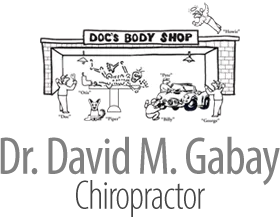Many adults begin to develop shoulder pain, even though they may not have sustained a specific injury. It's important to pay attention to such shoulder issues, as a healthy shoulder joint is the key to full function of the upper extremities. We all know at least one person whose ability to perform normal activities of daily living has been significantly compromised by chronic shoulder pain. Conservative treatment may be of benefit, but the key, as always, is to prevent these problems before they occur. The primary prophylactic intervention, as is the case for most musculoskeletal conditions, is exercise.
We all agree that the human body's design is magnificent. Every component has a purpose, down to the smallest cell. Every system is deeply interconnected with every other. Miraculously, the whole is much greater than the sum of the parts. And yet, there are a few "gotchas" built-in to this ingenious design. With respect to the shoulder, the "gotcha" relates to the shoulder joint's extraordinary mobility. The shoulder joint has the greatest range of motion of all the joints in your body. But this extreme mobility comes at a price, that is, the shoulder joint is not a particularly stable joint. For example, shoulder dislocations comprise approximately 50% of all such injuries.
Shoulder pain in the absence of a specific injury often represents damage to the rotator cuff. Again, the design of the shoulder joint and surrounding soft tissues is implicated in these rotator cuff problems. The blood supply to the bones, muscles, ligaments, and tendons of the shoulder is consistently compromised during normal motion of the shoulder above 90º, as in placing an object on or taking an object down from the top shelf in a kitchen cabinet. If much of your day is spent with your arm elevated above 90º to the front or to the side, over time you may develop nagging shoulder pain. Worse, with persistent repetitive motion above 90º, nagging shoulder pain may become chronic pain that restricts activities.
The best approach to shoulder problems is to become aware of the rotator cuff's well-known tendency to develop degenerative changes. We can be proactive by doing strength-training exercises for the shoulder and incorporating these exercises in our weekly exercise program as soon as possible.1,2 Beginning such exercises in the teenage years would be ideal. For those of us who are older, the right time to begin shoulder strength training is now. Shoulder exercises stimulate growth of new muscle fibers, increase the size of muscle fibers already in existence, and stimulate growth of nerve fibers bringing information to and from all shoulder girdle structures.
Shoulder exercises should be done once or twice a week as part of your overall fitness program. As with all exercise that's new to you, start slowly and gradually increase the level of difficulty over time.3 The result of all this activity is a dramatically improved blood supply to the shoulder region and a dramatically reduced tendency for rotator cuff degeneration and injury.
1Choi SH, Lee BH: Clinical Usefulness of Shoulder Stability Exercises for Middle-aged Women. J Phys Ther Sci 25(10):1243-1246, 2013
2Saltychev M, et al: Conservative treatment or surgery for shoulder impingement: systematic review and meta-analysis. Disabil Rehabil 37(1):1-8, 2015
Another example of a common issues
3Daenen L, et al: Exercise, not to exercise, or how to exercise in patients with chronic pain? Applying science to practice. Clin J Pain 31(2):108-114, 2015
